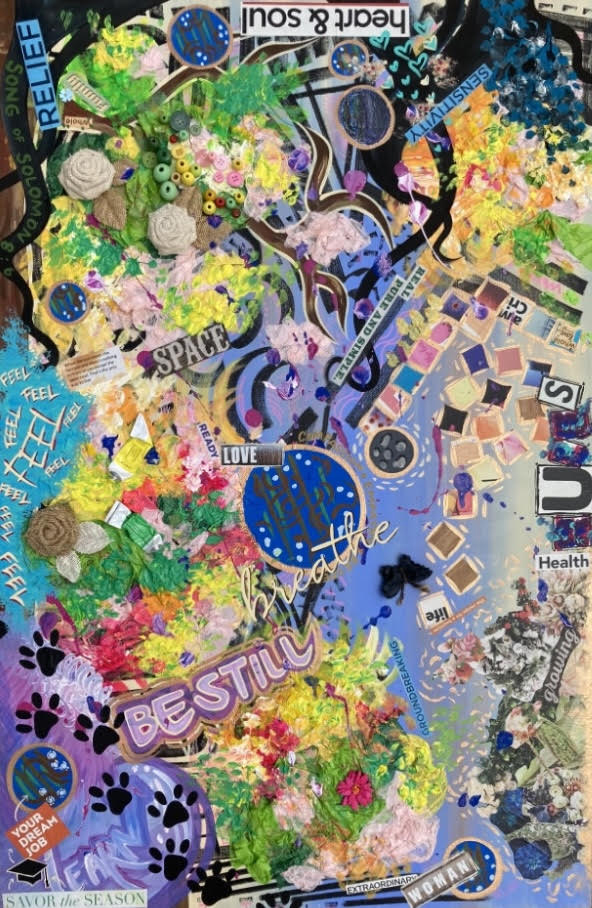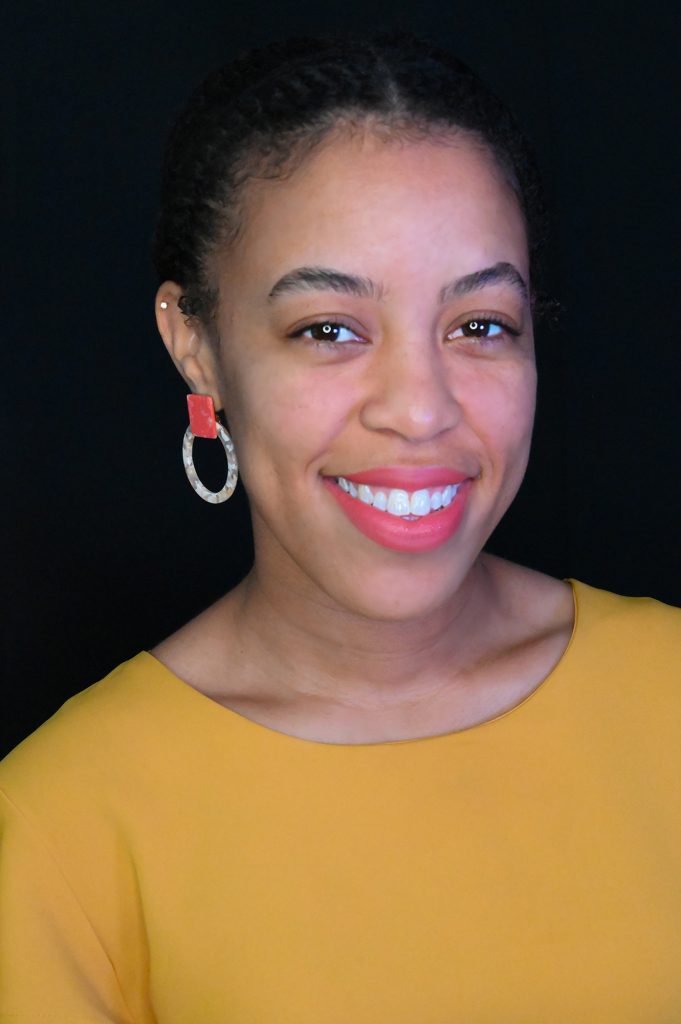February 24, 2021
As we honor Black history, we acknowledge the importance of amplifying and supporting Black art therapists and students and the invaluable contributions they have and continue to make to our field. How do you celebrate your racial/ethnic/cultural identities in your studies? In what ways must you protect your identity?
As a Black art therapy student, I celebrate my cultural identities by being my most authentic self. This requires mindful reflection and continuous affirmation. By being proud of who I am as a Black woman with unique experiences, I hope to genuinely inspire my clients, classmates, and colleagues to be proud of who they are as well. I am learning that it is a blessing to be different. I choose to celebrate what makes me stand out in the crowd, while honoring my vision and voice. As I study aspects of art therapy theory and application, it is important for me to maintain my integrity and protect my truth as a Black woman in America.
In what ways does attending a predominantly white institution (PWI) affect your art therapy training? Are there systems in place to address diversity and make transformative changes?
Attending a PWI has provocatively brought me closer to my cultural roots. I have been challenged to look at myself in the mirror with a deeper intention to understand my beliefs and values as a Black art therapist amongst predominately white faculty and students. It can feel like a lonely world at times when representation and approaches to art therapy history, theory, research, and practice seem limited to a predominately white perspective.
Considering the PWI and graduate program as a microcosm, I personally understand how Black and brown people may feel overlooked, undervalued, or misunderstood within society as a whole; and unfortunately, this has periodically affected my self-confidence. However, as I continue to grow in my identity, I am being taught to stand for what I believe in and to speak my voice, even if I stand against the crowd. I am grateful for the committed classmates and faculty who have made efforts to listen to the needs of students of color. Collectively, we are working to face difficult conversations pertaining to racism and oppression within and without the PWI and program, while aiming to create environments that honor all intersectional identities. As co-chair of the GW Art Therapy Student Association Multicultural Committee, I am mostly pleased with our intentions to foster a sense of belonging and cultural humility. A constant reminder to myself is to rest in the truth that change is possible with time and love.
Countless videos capturing acts of hate, racism, and police brutality continue to spark national dialogue. How have race-related issues, social justice, and racism informed or impacted your studies as an art therapy student?
The racial injustice that we are enduring has greatly impacted my passion for healing the Black community in particular. I am encouraged as a student art therapist to take a strength-based approach that honors resilience and restores a sense of security. Despite the intergenerational trauma and the evil enacted on Black people today, I have stronger faith that healing and creative change can occur through greater mental health resources and healthy interpersonal engagements within the Black community. My desire is to listen to direct narratives and gain more knowledge and understanding about the needs of my people who are hurting. Simultaneously, I am influenced to listen to my own needs and experiences as a Black human being so that I am authentically informed, self-aware, and empathetic to others.
How do you use art to honor your culture or heritage?
I use art to make a statement and to amplify my voice. Vibrant colors and mixed media allow me to express my inner being. I am able to share with the world what I often cannot say with words. Highlighting Black and brown human beings, especially Black women, within my artwork offers a form of freedom. It reminds me that we are works of art, God’s creations. It exposes myself and others to new imagery and ideas, in hopes to challenge negative stigmas and stereotypes. I also enjoy connecting with words, nature, and lifestyles through artmaking. I research, discover, and identify with aspects of life through the creative process. The elements of art and principles of design, allow me to express power, beauty, and healing. I can activate imagination through my unique gift.
Is there anything else you would like to share?
I believe that the expressive arts can lead us down a path of unimaginable experiences. Many of us do not know how to live life outside of our typical box shaped by the past; however, the creative process allows us to explore and practice. I am passionate about being a brave companion for myself and others as we discover new ways of living and being free.

“Be Still” by Seraiah Simmons. Acrylic paint and collage. May 2020.
This mixed media artwork was created through an El Duende (layering) process. It captures personal, professional, and academic experiences that I endured within my 2nd year of art therapy graduate studies and clinical internships. Day by day, details were added. Now the canvas holds abstract pieces of my heart, representing integration and wholeness.
Seraiah Simmons, B.A.
 Seraiah Simmons is an expressive artist who fell in love with artmaking at a young age. She was passionate about sharing her love for art with others, and therefore studied Art Education at Old Dominion University. After receiving her Bachelor of Arts degree, she passionately pursued her art teaching profession within public school systems and art-based community organizations. During Seraiah’s teaching journey within artmaking spaces, she witnessed many psychosocial phenomenons and disparities among her diverse student populations. She was encouraged to learn more about the ways psychology, neuroscience, and the creative process could promote social justice. Now, Seraiah is graciously completing her third and final year of The George Washington Art Therapy Master’s Program. She serves as a Student Intern and Community Engagement Coordinator within The George Washington Art Therapy Clinic. Her focus is on nurturing an atmosphere of creative healing and evolution for humanity.
Seraiah Simmons is an expressive artist who fell in love with artmaking at a young age. She was passionate about sharing her love for art with others, and therefore studied Art Education at Old Dominion University. After receiving her Bachelor of Arts degree, she passionately pursued her art teaching profession within public school systems and art-based community organizations. During Seraiah’s teaching journey within artmaking spaces, she witnessed many psychosocial phenomenons and disparities among her diverse student populations. She was encouraged to learn more about the ways psychology, neuroscience, and the creative process could promote social justice. Now, Seraiah is graciously completing her third and final year of The George Washington Art Therapy Master’s Program. She serves as a Student Intern and Community Engagement Coordinator within The George Washington Art Therapy Clinic. Her focus is on nurturing an atmosphere of creative healing and evolution for humanity.
